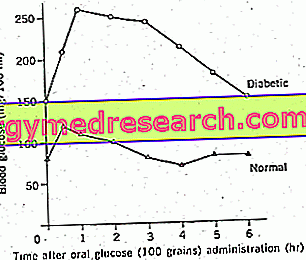
What is Forxiga?
Forxiga is a medicine that contains the active substance dapagliflozin. It is available as tablets (5 and 10 mg).
What is Forxiga used for?
Forxiga is used to treat adults with type 2 diabetes.
Forxiga can be used on its own (monotherapy) when diet and exercise alone do not provide adequate control of glucose (sugar) levels in the blood in patients intolerant of metformin (another antidiabetic medicine).
Forxiga can also be used as an adjunctive therapy in combination with other antidiabetic medicines, including insulin, when these medicines, together with diet and exercise, do not provide adequate diabetes control.
The medicine can only be obtained with a prescription.
How is Forxiga used?
The recommended dose of Forxiga is 10 mg once a day. If Forxiga is used in combination with insulin or medicines that promote the body's production of insulin, it may be necessary to reduce the dose to reduce the risk of hypoglycaemia (low blood glucose concentration). Because the effects of Forxiga depend on kidney function, the effectiveness of the medicine is reduced in patients with renal insufficiency. Therefore, the use of Forxiga is not recommended in patients with moderate to severe renal insufficiency. In patients with severe impairment of liver function a starting dose of 5 mg is recommended.
How does Forxiga work?
Type 2 diabetes is a disease in which the pancreas does not produce enough insulin to control the level of glucose in the blood or where the body is unable to use insulin effectively, which leads to increased levels of glucose in the blood.
The active substance in Forxiga, dapagliflozin, works by blocking a protein in the kidneys, called the type 2 sodium-glucose transporter (SGLT2). SGLT2 is a protein responsible for the reabsorption of glucose into the bloodstream (bloodstream) from urine, when blood is filtered through the kidneys. By blocking the action of SGLT2, Forxiga induces the elimination of more glucose through the urine and, consequently, the reduction of the concentration of glucose in the blood.
What studies have been carried out on Forxiga?
The effects of Forxiga were first tested in experimental models before being studied in humans.
Forxiga used as monotherapy was compared with a placebo (a dummy treatment) in two studies involving 840 patients. A third study compared Forxiga with a sulphonylurea (glipizide), both given in combination with metformin in 814 patients. Four other studies compared Forxiga with a placebo, in the form of adjunctive therapy in combination with metformin, a sulphonylurea (glimepiride), a thiazolidinedione or insulin in 2 370 patients.
In all the studies the main measure of effectiveness was the level in the blood of a substance called glycosylated hemoglobin (HbA1c), which gives an indication of the effectiveness of blood glucose control.
What benefit has Forxiga shown during the studies?
Forxiga was more effective than placebo in reducing HbA1 levels when used both as monotherapy and in combination with other antidiabetic medicines. Used as monotherapy at a dose of 10 mg, Forxiga decreased HbA1c levels by 0.66% more than placebo after 24 weeks. In combination with other antidiabetic medicinal products, Forxiga 10 mg decreased HbA1c levels by 0.54-0.68% more than placebo after 24 weeks.
Compared to sulphonylurea therapy, Forxiga has shown at least equal efficacy: both medicines have resulted in a reduction of HbA1c levels of 0.52% after 52 weeks.
What is the risk associated with Forxiga?
The most common side effect of Forxiga (seen in more than 1 patient in 10) is hypoglycaemia when given in combination with a sulphonylurea or insulin. For the full list of all side effects reported with Forxiga, see the package leaflet.
Forxiga should not be used in people who are hypersensitive (allergic) to dapaglifozin or any of the other ingredients.
Why has Forxiga been approved?
The CHMP concluded that Forxiga has been shown to be effective in reducing blood glucose levels in patients with type 2 diabetes, whether used as monotherapy or in combination with other antidiabetic medicines with different mechanisms of action. In addition, other beneficial effects have been observed in patients treated with Forxiga including a weight loss and a decrease in blood pressure.
Frequently observed side effects, such as an increase in infections of the genital tract and, to a lesser extent, of the urinary tract (infection of the structures that carry urine), were related to the mode of action of the medicine and are considered manageable . In patients treated with Forxiga, a lower but higher number of bladder, breast and prostate cancer cases were observed compared to the placebo group. However, no differences emerged between the groups when all types of cancer were considered; furthermore, the preclinical studies that examined the risk of tumor onset with Forxiga found no such risk. The committee recommended that further studies be carried out to investigate this issue further. The CHMP concluded that Forxiga's benefits are greater than its risks and recommended that it be given marketing authorization.
More information on Forxiga
On 12 November 2012, the European Commission issued a marketing authorization for Forxiga, valid throughout the European Union.
For the full EPAR version of Forxiga, consult the website of the Agency: ema.Europa.eu/Find medicine / Human medicines / European public assessment reports. For more information about treatment with Forxiga, read the package leaflet (also part of the EPAR) or contact your doctor or pharmacist.
Last update of this summary: 10-2012.



